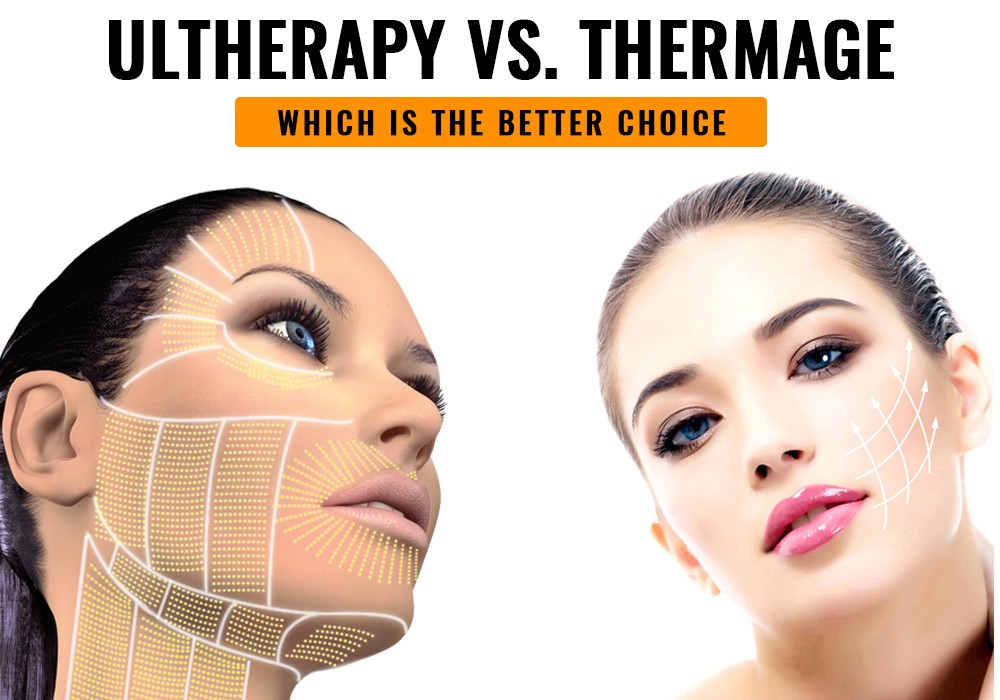In the ever-evolving field of non-invasive cosmetic treatments, Thermage FLX and Ultherapy have gained significant popularity as effective options for facial rejuvenation. Both procedures aim to improve the appearance of the skin and combat signs of aging, but they differ in terms of technology, treatment areas, comfort level, and expected results. If you’re considering either thermage flx or Ultherapy, it’s crucial to understand their similarities, differences, and how to make an informed decision based on your unique needs and preferences.
Introduction
As we age, our skin begins to lose its elasticity, resulting in sagging, wrinkles, and fine lines. thermage vs ultherapy offer non-surgical alternatives to traditional facelifts, utilizing innovative technologies to tighten and lift the skin. In this article, we’ll delve into the features of both Thermage FLX and Ultherapy, compare their similarities and differences, and provide insights to help you decide which treatment may be the best fit for you.
Understanding Thermage FLX and Ultherapy
– What is Thermage FLX?
Thermage FLX is a non-invasive skin tightening treatment that utilizes radiofrequency (RF) energy to stimulate collagen production. Collagen is a vital protein that provides structure to the skin, and its production decreases as we age. The RF energy delivered by Thermage FLX heats the deep layers of the skin, promoting collagen regeneration and improving skin tightness. This procedure is commonly used to target areas such as the face, neck, and body, addressing concerns like sagging skin, wrinkles, and cellulite.
– What is Ultherapy?
Ultherapy is a non-invasive treatment that employs focused ultrasound energy to lift and tighten the skin. By delivering controlled ultrasound waves to specific depths beneath the skin’s surface, Ultherapy stimulates collagen production and triggers a natural skin rejuvenation process. This procedure primarily targets areas on the face, neck, and décolletage, aiming to reduce sagging skin, fine lines, and wrinkles.
Key Similarities between Thermage FLX and Ultherapy
While Thermage FLX and Ultherapy differ in certain aspects, they also share several common features:
– Non-invasive treatments
Both Thermage FLX and Ultherapy are non-surgical procedures, meaning they don’t require incisions or invasive techniques. This factor appeals to individuals seeking to improve their appearance without the risks and downtime associated with surgery.
– Facial rejuvenation
Thermage FLX and Ultherapy focus on facial rejuvenation by targeting problem areas such as sagging skin, wrinkles, and fine lines. They are designed to provide a more youthful and lifted appearance without altering the natural features of the face.
– Stimulate collagen production
Collagen plays a crucial role in maintaining the skin’s firmness and elasticity. Both Thermage FLX and Ultherapy stimulate collagen production by delivering energy to the deeper layers of the skin. This collagen regeneration process results in gradual skin tightening and improved texture over time.
Key Differences between Thermage FLX and Ultherapy
While Thermage FLX and Ultherapy share similarities, they also have distinct differences that may influence your choice:
– Technology and treatment areas
Thermage FLX utilizes radiofrequency energy, while Ultherapy employs focused ultrasound energy. These different technologies target specific depths and areas within the skin. Thermage FLX is suitable for various body parts, including the face, neck, and body, while Ultherapy primarily focuses on the face, neck, and décolletage.
– Comfort level during the procedure
Thermage FLX incorporates a Comfort Pulse Technology™ to enhance the patient’s comfort during the treatment. It provides a cooling effect before, during, and after delivering the RF energy. On the other hand, Ultherapy may cause some discomfort or mild pain, as the ultrasound waves penetrate deep into the skin.
– Treatment duration and frequency
The duration of a Thermage FLX session typically ranges from 30 minutes to an hour, depending on the treatment area. In contrast, Ultherapy treatments generally take around 60 to 90 minutes. Regarding frequency, Thermage FLX usually requires a single session, while Ultherapy may require multiple sessions spaced several months apart for optimal results.
– Expected results and downtime
Thermage FLX results gradually improve over a period of two to six months, with minimal downtime. Patients can resume their regular activities immediately after the procedure. Ultherapy results are also gradual, but they may become noticeable sooner than Thermage FLX. Some individuals may experience mild redness or swelling after Ultherapy, but it typically subsides within a few hours.
Choosing between Thermage FLX and Ultherapy
When deciding between Thermage FLX and Ultherapy, consider the following factors:
- Treatment goals: Determine the specific concerns you want to address, such as sagging skin, wrinkles, or fine lines.
- Target areas: Assess which areas of your face or body require treatment and consider the suitability of each procedure.
- Pain tolerance: Consider your pain tolerance level and whether you prefer a treatment with additional comfort measures.
- Downtime: Evaluate your availability and the time you can allocate for recovery or subsequent sessions.
Ultimately, it is advisable to consult with a healthcare professional who specializes in cosmetic treatments. They can assess your individual needs and recommend the most appropriate treatment for achieving your desired outcomes.
Conclusion
Thermage FLX and Ultherapy are non-invasive cosmetic treatments that offer remarkable results in facial rejuvenation. While Thermage FLX uses radiofrequency energy and Ultherapy utilizes focused ultrasound energy, both treatments stimulate collagen production, resulting in tighter, more youthful-looking skin. Understanding the differences between these procedures, including treatment areas, comfort level, expected results, and downtime, is essential in choosing the one that best aligns with your goals and preferences. By consulting with a qualified professional, you can make an informed decision and embark on your journey to a more youthful appearance.

